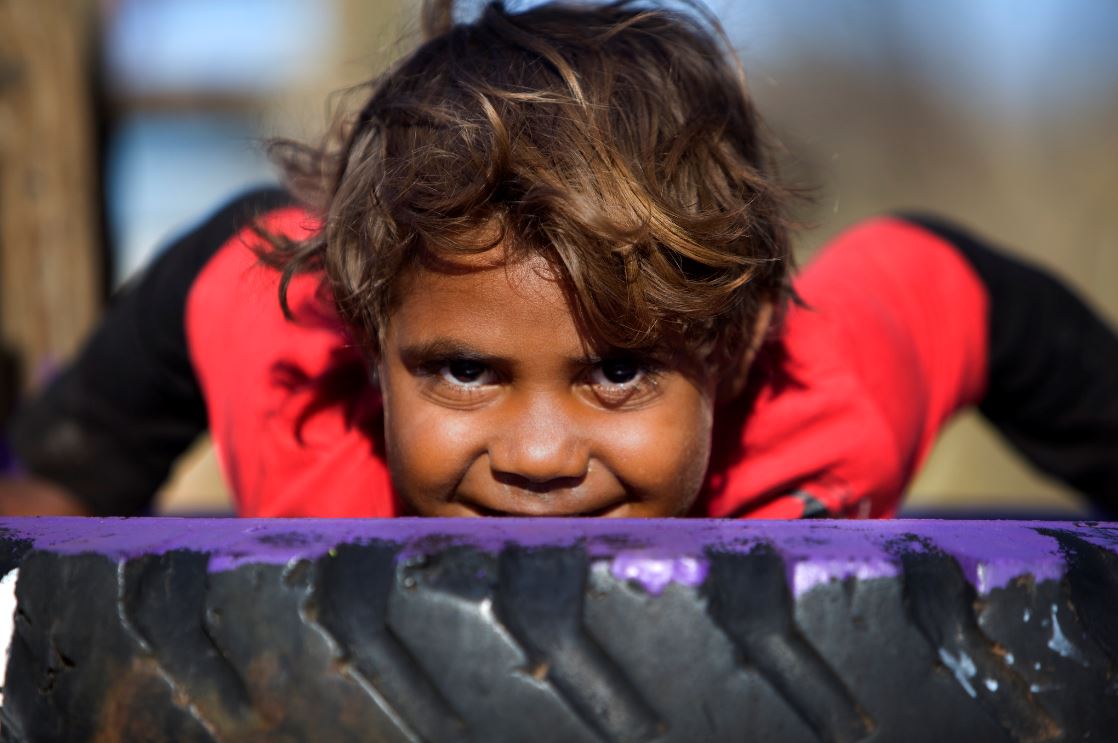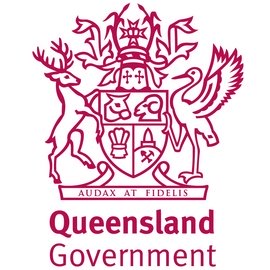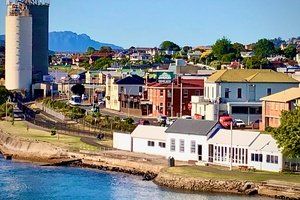AEU federal president Correna Haythorpe said it was deeply disappointing that this year’s Federal Budget had failed to increase the Commonwealth share of the Schooling Resource Standard to 25 per cent, despite widespread support across the nation for the increase, from principals, teachers, parents, unions, community groups and six state and territory governments.
The Greens agreed, and said Labor’s Budget contains barely any new spending for Australia’s “woefully underfunded” public schools, while at the same time pouring an additional $5.9 billion over the forward estimates into the “overfunded” private sector.
“Tipping more public money into a private system bursting at the seams with funding, while 2.6 million kids attend public schools that aren’t able to deliver them the education they deserve, isn’t only unjustifiable, it’s reprehensible,” Greens spokesperson on Primary and Secondary Education, Senator Penny Allman-Payne said.
“One hundred per cent of the Schooling Resource Standard (SRS) isn’t some utopian aspiration – it’s only enough funding to get 80 per cent of kids in a school up to the minimum standard for reading and numeracy. And Labor won’t even commit to that.
“If Labor is so concerned about inflation and the cost of living, properly funding public schools and reversing the cost-shifting that’s produced soaring out-of-pocket costs for parents and carers, would have been a pretty smart idea.”
In what was a largely uneventful and uninspiring Budget for the early childhood, primary and secondary education sector, perhaps the most significant announcement was the $319.50 weekly payments for eligible teaching students undertaking mandatory professional placements from July 2025.
Elsewhere the Budget flagged wage increases are on the horizon for early childhood educators, allocated $90m for 20,000 new fee-free TAFE and VET places and pre-apprenticeships, and $6.5m for a trial of online age verification tech to stop young people viewing pornography and violent content.
The Government has committed $110 million over four years to address the education divide between Indigenous and non-Indigenous Australians, including funding to extend existing programs, develop specific policies, attract and retain First Nations teachers and support Indigenous organisations.
“This is a missed opportunity to deliver a nation-building investment for our children and our country,” Haythorpe said.
“The issue of full funding of public schools is unfinished business for the Albanese Government and must be resolved this year.”

“If Labor thinks the Greens will just roll over and let them lock in underfunding for another generation of public school kids they have another thing coming,” Senator Allman-Payne said.
While Haythorpe acknowledged that funding negotiations between the federal, state and territory governments remains ongoing, she said the public knows that there is deep inequity in how public schools are funded when compared with private schools in Australia.
“If the Government can find $2.5 billion to overfund 40 per cent of private schools they can find the money to meet their election commitment to end the underfunding of public schools,” she said.
Haythorpe said the Government’s decision to not continue with Capital Works funding for public schools beyond this year, while giving private schools $1 billion in funding for new buildings and facilities over four years, is unacceptable and must be reconsidered.
Meanwhile, Independent Schools Australia CEO Graham Catt, said despite there being little news for education in the Budget, he welcomed the Government’s $2.4 billion in programs to support Indigenous Australians, including $29.1 million over four years to First Nations early childhood and education peak bodies to advise the Government on issues including a new national First Nations Education Policy and First Nations Teacher Strategy.
“We urge the Government to support the Indigenous Boarding Grants Program in the MidYear Economic and Fiscal Outlook,” Catt said.
“This will be critical to prevent school closures and adverse impacts on highly disadvantaged and vulnerable students.”
The grants were extended in last year’s Budget but were intended to be replaced by a longer-term, sustainable solution.
However, the outcomes of a Boarding Design Review announced in last year’s Budget are unknown, leaving schools and students in limbo.
Australia’s leading children’s mental health not-for-profit, Smiling Mind, meanwhile, said the Budget had failed the nation’s children.
The country, it said, is in the grips of mental health crisis, yet no funding has been allocated to preventative initiatives targeting primary school aged children, despite evidence that 25 to 50 per cent of adult mental illness can be prevented through early intervention during childhood and adolescence.
Responding to the budget, Smiling Mind CEO Sarah La Roche said a Government that isn’t focussed on preventing mental illness before it starts fails all Australians and guarantees this country’s mental health crisis will continue to worsen.
“While we respect that budgets need to deal with the immediate challenges, the skyrocketing cost of living pressures in Australia are having a profound impact on the mental health of parents and children,” La Roche said.
“Investing in kid’s mental health services is crucial to ensure the wellbeing of future generations, yet they’ve been completely neglected in this year’s budget.”
School refusal rates are at an all-time high and learning concerns and anxiety amongst primary school aged children has doubled in the last 10 years.
Seven out of 10 of the most common presentations to paediatricians are for mental health but only 50 per cent of children experiencing mental health challenges are receiving professional support.
“Kids with mental ill health are more likely to become adults with mental ill health. We know half of all adult mental health conditions first emerge before the age of 14.
“Helping our kids to develop the skills to thrive, and to reduce the social drivers of mental ill health, is critical now,” La Roche added.
Commonwealth Practicum Payments
Wage payments of $319.50 per week for all student teachers undergoing teaching placements Australia-wide has been widely welcomed and applauded in the sector.
Paid placements will ensure teaching degrees are more attractive for school leavers, in many cases they will also enable preservice teachers to seek out experiences in remote and regional schools.
University of Wollongong’s Professor Penny Van Bergen, says, “Commonwealth Prac Payments are a welcome investment for our future teachers, many of whom face 'placement poverty' when giving up their own paid work to undertake mandatory placements as part of their degrees".
While experts in the sector have largely agreed that the funds will ease the financial burdens associated with placements, some have argued more needs to be done, particularly to ensure that ITE cohorts are as diverse as the communities they serve.
Dr Lisl Fenwick, senior lecturer in Professional Experience at the University of South Australia, said increases in the cost of living have meant that preservice teachers are working extensive hours in paid work while they are studying to be teachers.
“Often, they have to give up part-time paid work, or scale this back significantly, to undertake compulsory placements. Some preservice teachers have had to delay their study programs until they can afford to undertake the placement components,” she told MCERA.
Fenwick said the payments will mean that some preservice teachers no longer need to do paid work during their placements, or they can significantly reduce the amount of paid work that they are doing.
“While the amount being given per week will not cover the full costs of living during placement, it will help.”
However Dr Anne McLeod, Associate Head of School for the School of Education at Charles Sturt University, argued that while the placement payments are clearly a significant stride in bolstering financial support for students, means-testing these payments risks overlooking those who are most in need.
“A significant number of students already struggle to make ends meet, often juggling multiple jobs to cover basic expenses,” she said.
“For these individuals, the means test could disqualify them from accessing the CPP, despite their genuine need for financial support.
“Moreover, the requirement to leave other employment to fulfill placement obligations adds another layer of complexity. This may force students to choose between jeopardising their financial stability or foregoing the continuation of their course.”
Ultimately, she said, the unintended consequence of this approach could be a cohort of students facing unemployment upon completion of their placements, exacerbating existing economic challenges.
Early childhood funding
The Parenthood CEO Georgie Dent said her organisation welcomed the Federal Treasurer’s commitment to fund a wage increase for early childhood educators, which is critical for educators, children, families and the sector.
“Early childhood educators have been chronically underpaid and undervalued for too long and have been leaving in accelerating numbers because they cannot afford to stay and they can earn more working in retail,” Dent said.
“There is no early childhood education and care without educators.”
“Women make up 97 per cent of the early childhood educator workforce and desperately need a wage rise to provide cost-of-living relief and to help boost their own economic security.”
University of South Australia’s Dr Susie Raymond agreed, and said an expected wage increase for teachers and educators in early childhood services will support the sustainability of the early childhood workforce who tend to drift to primary school because of poor wages and conditions.
“The focus on early childhood in the 2024-2025 budget is welcome and acknowledges the importance of this period of a child’s life and the need for high-quality interventions to improve learning and wellbeing outcomes for young children and families,” she told MCERA.
The Parenthood also welcomed the inclusion of superannuation on paid parental leave from 1 July 2025, the additional $98.5million for inclusion support for children with additional needs in early learning, as well as the increased investment in funding SNAICC – the National Voice for First Nations Children.
The paramount importance of equity within early childhood education and care cannot be overstated, according to CSU’s Dr Anne McLeod. “Indigenous communities must have access to well-trained teachers who understand their cultural context and can provide quality education to all children,” she says.
“We are disappointed, however, that the Government has not responded to calls to remove or reform the activity test – the child care subsidy eligibility system that traps an estimated 40,000 women out of the workforce. We will continue to advocate for its removal,” Dent said.
SNAICC (the Secretariat of National Aboriginal and Islander Child Care) said additional early years funding announced in the Budget will support efforts to close the gap for Aboriginal and Torres Strait Islander children and families.
The national peak body representing the interests of Aboriginal and Torres Strait Islander children welcomed Budget 2024-25’s initiatives targeted towards new policy developments and program delivery.
“SNAICC is receiving dedicated funding for the first time, as is our sister peak, the National Aboriginal and Torres Strait Islander Education Corporation (NATSIEC),” the organisation’s CEO, Catherine Liddle, said.
“A total of $29.1 million over four years, with $8.7 million per year ongoing, is earmarked for SNAICC and NATSIEC to partner with Government on issues impacting our children in early childhood and education.
“This will give us important ongoing stability, enabling us to continue bringing the voices of Aboriginal and Torres Strait Islander children to the development of policies and programs that affect them.
“The commitment to a wage rise for hard-working early childhood educators is also welcomed and we are also pleased to see $5.9 million over two years allocated to a National Aboriginal and Torres Strait Islander Children’s Commissioner.
Internet age limits and online harm
Millions of dollars will be spent protecting children from harmful online content, fighting evolving online threats, and warning about gambling features hidden inside video games.
The Budget measures come in addition to investments in traditional media and a funding boost for the eSafety Commissioner to support use of a law challenged by billionaire social network owner Elon Musk.
The announcements follow growing concerns about harmful and violent content on social media in Australia, and a South Australian proposal to ban children under the age of 14 from joining popular online platforms.
The measures include a $6.5 million to create a technology pilot to test “age assurance technologies” that could prevent children from accessing inappropriate and harmful online content.

Prime Minister Anthony Albanese says the age assurance technology pilot “will identify available age assurance products to protect children from online harm, and test their efficacy, including in relation to privacy and security”.
The program, budget papers said, would also test the privacy and security requirements needed to demand age verification across websites.
Funding from a $43.2 million communications package would also be used to respond to “emerging and evolving online harms” and another $1.4 million would be given to the Office of the eSafety Commissioner over two years to support legal and compliance issues associated with the Online Safety Act.
The law, introduced in 2022, was recently tested in the Federal Court by the social network X, and owned by Musk, which challenged its power to demand the removal of a stabbing video.
The court refused to extend the eSafety Commissioner’s injunction against X under the law.
The Government will also spend $1 million over two years on an education campaign about upcoming changes to video game ratings due to begin in September.
Under the changes, games with built-in purchases linked to chance, such as loot boxes, will automatically receive an M rating, while titles with simulated gambling elements will attract an R18+ rating.

















